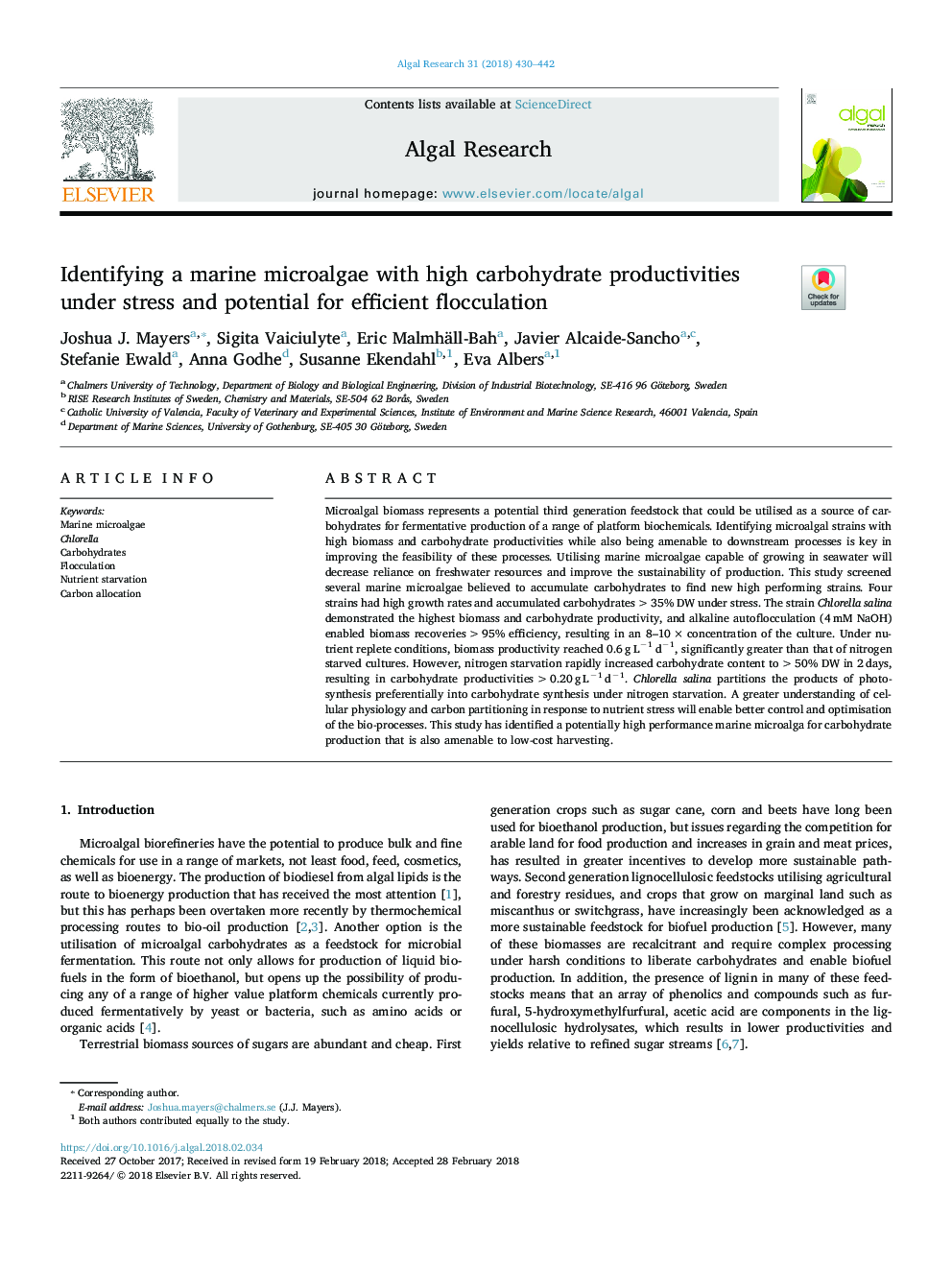| Article ID | Journal | Published Year | Pages | File Type |
|---|---|---|---|---|
| 8086089 | Algal Research | 2018 | 13 Pages |
Abstract
Microalgal biomass represents a potential third generation feedstock that could be utilised as a source of carbohydrates for fermentative production of a range of platform biochemicals. Identifying microalgal strains with high biomass and carbohydrate productivities while also being amenable to downstream processes is key in improving the feasibility of these processes. Utilising marine microalgae capable of growing in seawater will decrease reliance on freshwater resources and improve the sustainability of production. This study screened several marine microalgae believed to accumulate carbohydrates to find new high performing strains. Four strains had high growth rates and accumulated carbohydrates >35% DW under stress. The strain Chlorella salina demonstrated the highest biomass and carbohydrate productivity, and alkaline autoflocculation (4â¯mM NaOH) enabled biomass recoveries >95% efficiency, resulting in an 8-10â¯Ãâ¯concentration of the culture. Under nutrient replete conditions, biomass productivity reached 0.6â¯gâ¯Lâ1â¯dâ1, significantly greater than that of nitrogen starved cultures. However, nitrogen starvation rapidly increased carbohydrate content to >50% DW in 2â¯days, resulting in carbohydrate productivities >0.20â¯gâ¯Lâ1â¯dâ1. Chlorella salina partitions the products of photosynthesis preferentially into carbohydrate synthesis under nitrogen starvation. A greater understanding of cellular physiology and carbon partitioning in response to nutrient stress will enable better control and optimisation of the bio-processes. This study has identified a potentially high performance marine microalga for carbohydrate production that is also amenable to low-cost harvesting.
Related Topics
Physical Sciences and Engineering
Energy
Renewable Energy, Sustainability and the Environment
Authors
Joshua J. Mayers, Sigita Vaiciulyte, Eric Malmhäll-Bah, Javier Alcaide-Sancho, Stefanie Ewald, Anna Godhe, Susanne Ekendahl, Eva Albers,
